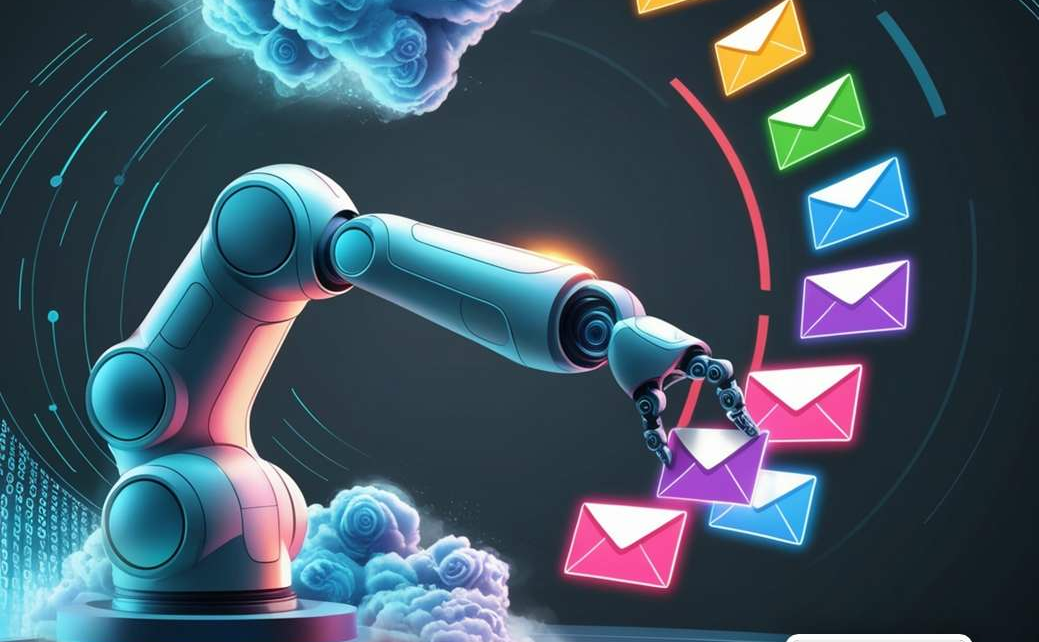In today’s competitive digital marketplace, maintaining a meaningful relationship with your leads can make or break your business success. Effective communication plays a crucial role in nurturing these leads, and email automations powered by platforms like MSG91 provide businesses with the tools they need to build strong connections. Leveraging email automations can streamline your efforts, ensuring timely, personalised communication with prospects and customers alike.
The Importance of Lead Nurturing
Lead nurturing is more than just a buzzword in the marketing world; it’s an essential strategy for converting prospects into loyal customers. Engaging your leads with the right message at the right time keeps your brand top-of-mind and builds trust. Without consistent communication, potential customers may drift away, leaving your competitors with the upper hand.
Email automations simplify this process by delivering relevant, targeted content automatically. Through these tools, you can craft sequences that adapt to the specific behaviours and preferences of your leads, making the interaction feel personal and thoughtful.
How MSG91’s Email Automations Work
MSG91’s platform provides a suite of marketing automation tools designed to optimise your lead-nurturing campaigns. By utilising email automations, businesses can:
- Segment Audiences: Divide your leads into specific groups based on behaviour, location, or preferences. This allows for tailored messages that resonate more effectively.
- Schedule Communications: Plan your emails in advance and set up triggers for sending based on user actions, ensuring timely engagement.
- Track Engagement: Monitor open rates, click-through rates, and other key metrics to measure campaign success and refine your strategies.
- Personalise Messages: Craft customised emails using dynamic content fields to address individual recipients by name or include information relevant to their journey.
Benefits of Email Automations for Lead Nurturing
1. Time-Saving Efficiency
Automation eliminates the need for manual follow-ups, freeing up valuable time for your marketing and sales teams. With MSG91’s email automations, your campaigns can run seamlessly in the background while you focus on other aspects of your business.
2. Enhanced Personalisation
Gone are the days of generic, one-size-fits-all emails. Email automations enable you to deliver hyper-personalised content tailored to the unique interests and needs of each lead. This level of personalisation fosters deeper connections and drives better results.
3. Improved Conversion Rates
By nurturing leads consistently and effectively, you can guide them through the sales funnel with ease. Well-timed, relevant emails keep your leads engaged and more likely to convert into paying customers.
4. Scalability
Whether you’re handling a handful of leads or thousands, email automations scale effortlessly. MSG91’s platform ensures that your campaigns maintain the same level of effectiveness, regardless of the volume of recipients.
Best Practices for Email Automations
To maximise the impact of your email automations, consider the following best practices:
1. Define Clear Goals
What do you want to achieve with your email automations? Whether it’s increasing website traffic, boosting sales, or improving brand awareness, having clear objectives will guide your strategy.
2. Craft Compelling Subject Lines
Your subject line is the first thing a recipient sees. Make it engaging and relevant to encourage higher open rates.
3. Focus on Value-Driven Content
Every email should provide value to the reader. Share helpful tips, exclusive offers, or personalised recommendations that align with their interests.
4. Utilise A/B Testing
Test different versions of your emails to identify what resonates best with your audience. Experiment with subject lines, call-to-action buttons, and email layouts.
5. Monitor and Adjust
Regularly analyse the performance of your email automations. Use insights from MSG91’s analytics tools to refine your campaigns and improve results.
Beyond Email: Integrating Marketing Automations
While email automations are a powerful tool, combining them with broader marketing automation strategies can amplify your results. MSG91’s marketing automation suite offers capabilities such as:
- Multi-Channel Campaigns: Reach your audience via SMS, voice, and app notifications in addition to email.
- Lead Scoring: Prioritise high-quality leads based on their engagement and likelihood to convert.
- CRM Integration: Sync with your customer relationship management system for seamless data sharing and campaign execution.
- Triggered Workflows: Automate complex workflows that involve multiple touchpoints and actions.
Use case of Email Automations
Use Case 1: E-Commerce
Email automation and marketing automations are essential tools for the e-commerce industry, helping businesses streamline processes, enhance customer engagement, and boost revenue. Below is a detailed, point-wise exploration of how these automations can be leveraged effectively in various aspects of an e-commerce business:
1. Customer Onboarding
- Welcome Series: Automatically send a series of welcome emails to new subscribers or customers, introducing them to your brand, values, and product offerings.
- Account Setup Guidance: Provide step-by-step instructions or tips on setting up an account, navigating your website, or customising preferences.
2. Personalised Product Recommendations
- Behaviour-Based Suggestions: Use browsing history, previous purchases, or wish lists to suggest relevant products via email.
- Dynamic Content: Include personalised recommendations in email templates that update in real-time based on user activity.
3. Abandoned Cart Recovery
- Reminder Emails: Send automated emails to customers who added items to their cart but didn’t complete the purchase.
- Incentives: Include discounts, free shipping offers, or limited-time deals to encourage customers to complete their purchase.
4. Order Confirmation and Updates
- Instant Confirmation Emails: Automatically send order confirmation emails with detailed receipts and estimated delivery times.
- Shipping Notifications: Provide updates on order status, such as dispatch and delivery timelines, to keep customers informed.
5. Customer Retention and Loyalty
- Post-Purchase Emails: Send follow-up emails thanking customers for their purchase and suggesting complementary products.
- Loyalty Program: Automate reward emails for loyalty points earned, milestones achieved, or exclusive member discounts.
6. Promotional Campaigns
- Seasonal Offers: Schedule and automate emails for holiday sales, seasonal discounts, or special events.
- Flash Sales: Notify customers about time-sensitive deals with countdown timers embedded in the email.
7. Customer Re-Engagement
- Win-Back Campaigns: Target inactive customers with personalised emails encouraging them to return with special offers or reminders of your unique products.
- Feedback Requests: Ask for reviews or suggestions to understand why customers might have disengaged.
8. Cross-Selling and Upselling
- Product Bundles: Recommend bundles or complementary products to increase average order value.
- Upgrade Offers: Encourage customers to move to higher-value products or services with tailored suggestions.
9. Review and Feedback Collection
- Post-Purchase Feedback: Automate emails asking customers to review their purchases, helping build trust and social proof.
- Survey Invitations: Send automated surveys to collect insights about customer preferences and satisfaction.
10. Event-Driven Campaigns
- Birthday and Anniversary Emails: Send personalised greetings along with exclusive discounts or gifts.
- Product Launch Notifications: Inform customers about new arrivals or updates based on their preferences.
11. Stock and Price Alerts
- Back-in-Stock Notifications: Notify customers automatically when previously out-of-stock items become available.
- Price Drop Alerts: Inform customers about discounts or reductions on products they’ve shown interest in.
12. Customer Support Integration
- Automated Helpdesk Replies: Acknowledge support requests with immediate email confirmations and estimated resolution times.
- Resolution Follow-Ups: Send emails after resolving customer issues to ensure satisfaction and gather feedback.
13. Multi-Channel Integration
- Email-SMS Combination: Combine email and SMS marketing to reinforce messages and improve customer engagement.
- Social Media Retargeting: Use marketing automations to trigger ads on social platforms for leads engaging with email campaigns.
14. Analytics and Reporting
- Performance Metrics: Automate email reports on open rates, click-through rates, and conversions for continuous improvement.
- Segmentation Insights: Track customer segments and adjust strategies based on their interaction with email campaigns.
15. Pre-Sale Nurturing
- Educational Campaigns: Send automated emails providing value-driven content like how-to guides or product comparisons to educate leads.
- Event Invitations: Promote webinars, live demos, or Q&A sessions to nurture potential buyers.
16. Subscription Management
- Renewal Reminders: Automate notifications for subscription expirations, offering renewal options and incentives.
- Subscription Upgrades: Suggest higher-tier plans based on customer usage or preferences.
Email automation and marketing automations are indispensable for e-commerce businesses aiming to scale efficiently and deliver exceptional customer experiences. By implementing these use cases, businesses can build stronger relationships, improve operational efficiency, and drive significant revenue growth. Investing in automation tools tailored to your industry needs ensures that you stay competitive in a rapidly evolving digital landscape.
Use Case 2: B2B Saas Company
Email automation and marketing automations are indispensable for B2B SaaS businesses. These tools help streamline communication, nurture leads, improve customer retention, and drive overall revenue growth. Below is a point-wise breakdown of their applications in the B2B SaaS industry:
1. Lead Generation and Nurturing
- Welcome Emails: Automatically send a personalised welcome email to new leads after they sign up, introducing your SaaS platform and its value propositions.
- Content Delivery: Distribute gated content like eBooks, whitepapers, or case studies instantly upon form submission.
- Drip Campaigns: Implement multi-stage email sequences that nurture leads by providing educational content, testimonials, or webinars based on their interests.
2. Product Demonstration and Trial Management
- Demo Confirmation Emails: Send automated reminders and follow-ups for scheduled product demonstrations.
- Trial Activation: Notify users about successful activation of their free trials and provide setup resources.
- Trial Nurturing: Deliver onboarding emails during the trial period, highlighting key features and best practices to ensure product adoption.
3. Onboarding New Customers
- Step-by-Step Guides: Automate a series of emails with video tutorials, FAQs, and documentation to help users get started with your platform.
- Goal-Based Emails: Send progress emails to ensure users are meeting their objectives within the platform.
- User Segmentation: Create different onboarding tracks based on user roles (e.g., admins, end-users) to deliver more relevant content.
4. Upselling and Cross-Selling Opportunities
- Usage-Based Recommendations: Suggest advanced features, integrations, or higher-tier plans based on customer usage patterns.
- Feature Announcements: Notify existing users about new features and highlight how these can add value to their operations.
- Complementary Services: Promote add-ons, plugins, or integrations that enhance the SaaS platform’s capabilities.
5. Customer Retention and Engagement
- Health Score Monitoring: Use marketing automation to trigger emails based on customer health scores, reaching out proactively to at-risk accounts.
- Engagement Reminders: Send periodic emails encouraging users to explore underutilised features or participate in training sessions.
- Anniversary Emails: Celebrate milestones such as subscription anniversaries to strengthen relationships and showcase appreciation.
6. Event Marketing
- Webinar Invitations: Automate registration and reminder emails for product webinars or industry-specific training sessions.
- Conference Follow-Ups: After attending events, send personalised emails to leads, including event summaries, key takeaways, and relevant resources.
7. Feedback and Reviews
- Survey Campaigns: Send automated surveys to gather feedback on product satisfaction, support experiences, or feature requests.
- Review Requests: Encourage happy customers to leave reviews on platforms like G2, Capterra, or Trustpilot.
8. Churn Reduction Strategies
- Renewal Reminders: Notify customers about upcoming subscription renewals and provide a seamless path to continue services.
- Proactive Support Emails: Reach out to users showing signs of disengagement, offering help or customised solutions.
- Exit Surveys: Trigger automated emails asking departing customers for feedback to understand the reasons for churn.
9. Account-Based Marketing (ABM)
- Customised Campaigns: Develop highly personalised email sequences targeting key accounts with specific challenges and solutions.
- Multi-Channel Coordination: Combine email automation with LinkedIn outreach, webinars, and targeted ads to nurture high-value prospects.
- Team Involvement: Automate notifications for sales teams when specific actions are taken by decision-makers within targeted accounts.
10. Feature Adoption Campaigns
- Educational Series: Send a sequence of emails introducing advanced features and demonstrating how they solve common pain points.
- Gamification: Encourage users to explore more of the platform by introducing badges, rewards, or progress tracking.
11. Lead Scoring and Segmentation
- Behaviour-Based Segmentation: Use marketing automation to group leads based on activities like email opens, webinar attendance, or trial logins.
- Lead Scoring Updates: Automatically adjust scores and alert sales teams when leads hit a pre-defined threshold, ensuring timely follow-ups.
12. Partnership Management
- Affiliate Onboarding: Automate welcome emails and resource delivery for new partners or affiliates.
- Performance Updates: Send periodic reports showcasing affiliate earnings, lead generation stats, or partnership milestones.
- Exclusive Offers: Notify partners of new co-marketing opportunities or exclusive incentives.
13. Compliance and Security Updates
- Policy Changes: Automate notifications about updates to terms of service, privacy policies, or compliance requirements.
- Security Alerts: Inform users promptly about security updates, downtime, or newly added safeguards.
14. Analytics and Reporting
- Performance Summaries: Deliver automated reports summarising platform usage, KPIs, or ROI metrics to customers.
- Account Health Reviews: Regularly send insights on how users can maximise their investment in your SaaS platform.
15. Referral Campaigns
- Referral Rewards: Automate emails encouraging users to refer colleagues or businesses in exchange for discounts or perks.
- Progress Tracking: Notify referrers about the status of their rewards and encourage further participation.
Email automation and marketing automations are vital for B2B SaaS companies aiming to optimise lead nurturing, improve customer retention, and scale their operations. By adopting these use cases, businesses can deliver personalised, timely, and data-driven communication to their audience, ultimately enhancing customer satisfaction and driving sustainable growth.
Real-World Success Stories
Case Study 1: E-Commerce Brand
A growing e-commerce company used MSG91’s email automations to send personalised product recommendations based on browsing history. The result? A 30% increase in email open rates and a 20% boost in sales.
Case Study 2: B2B SaaS Company
A SaaS provider implemented marketing automations to onboard new users. By sending a series of educational emails triggered by user actions, they reduced churn rates by 15% and improved customer satisfaction.
The Future of Email Automations
As technology continues to evolve, email automations are becoming smarter and more intuitive. AI-driven features, such as predictive analytics and advanced segmentation, are paving the way for even more precise and impactful campaigns. By adopting MSG91’s email automations now, businesses can stay ahead of the curve and maintain a competitive edge.
Conclusion
Nourishing your leads has never been easier, thanks to MSG91’s robust email automations and marketing automation tools. By leveraging these powerful capabilities, businesses can deliver personalised, timely, and value-driven communication that fosters trust and drives conversions. Whether you’re a small business or a large enterprise, adopting these strategies will set you up for sustained success in today’s dynamic marketplace.
Take the first step towards transforming your lead-nurturing efforts with MSG91. Explore the possibilities and watch your engagement and conversion rates soar.




